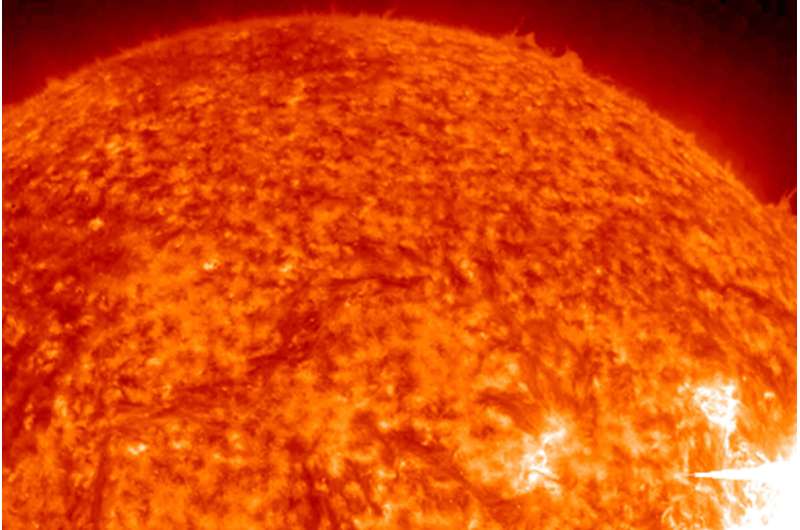da Silva was published recently in the journal Scientific Reports, a journal of the Nature Publishing Group.
"These are really exciting results," says da Silva. "One of the key things we showed in the paper is that lightning- and solar flare-driven signatures are completely different. The first tends to create electron density depletions, while the second enhancements (or ionization)."
While the AO radar used in the study is no longer available because of the collapse of AO's telescope in December of 2020, scientists believe that the data they collected and other AO historical data will be instrumental in advancing this work.
"This study helps emphasize that, in order to fully understand the coupling of atmospheric regions, energy input from below (from thunderstorms) into the lower ionosphere needs to be properly accounted for," da Silva says. "The wealth of data collected at AO over the years will be a transformative tool to quantify the effects of lightning in the lower ionosphere."
Better understanding the impact on the Earth's ionosphere will help improve communications.
da Silva worked with a team of researchers at the Arecibo Observatory (AO) in Puerto Rico, a National Science Foundation facility managed by the University of Central Florida under a cooperative agreement. The co-authors are AO Senior Scientist Pedrina Terra, Assistant Director of Science Operations Christiano G. M. Brum and Sophia D. Salazar a student at NMT who spent her 2019 summer at the AO as part of the NSF- supported Research Undergraduate Experience. Salazar completed the initial analysis of the data as part of her internship with the senior scientists' supervision.
"The Arecibo Observatory REU is hands down one of the best experiences I've had so far," says the 21-year-old. "The support and encouragement provided by the AO staff and REU students made the research experience everything that it was. There were many opportunities to network with scientists at AO from all over the world, many of which I would likely never have met without the AO REU."
AO's Terra and Brum worked with Salazar taking her initial data analysis, refining it and providing interpretation for the study.
"Sophia's dedication and her ability to solve problems grabbed our attention from the very first day of the REU program," Brum says. "Her efforts in developing this project resulted in publication in one of the most prestigious journals in our field."
"Another remarkable result of this work is that for the first time, a mapping of the spatial and seasonal occurrence of lightning strike over the region of the Puerto Rico archipelago is presented," Brum says. "Intriguing was also the detection of a lighting activity hotspot concentrated in the western part of La Cordillera Central mountain range of Puerto Rico."
Explore further



